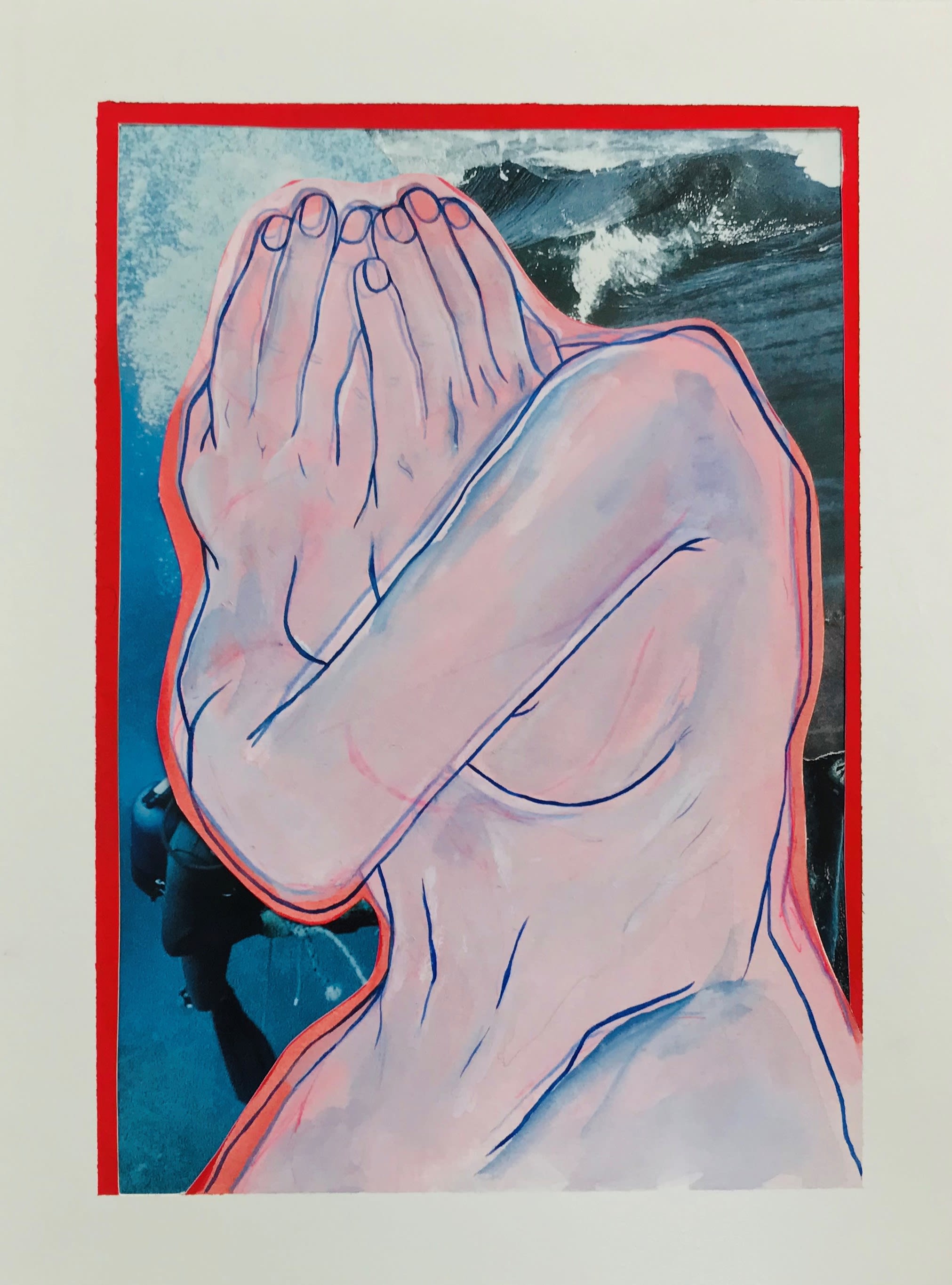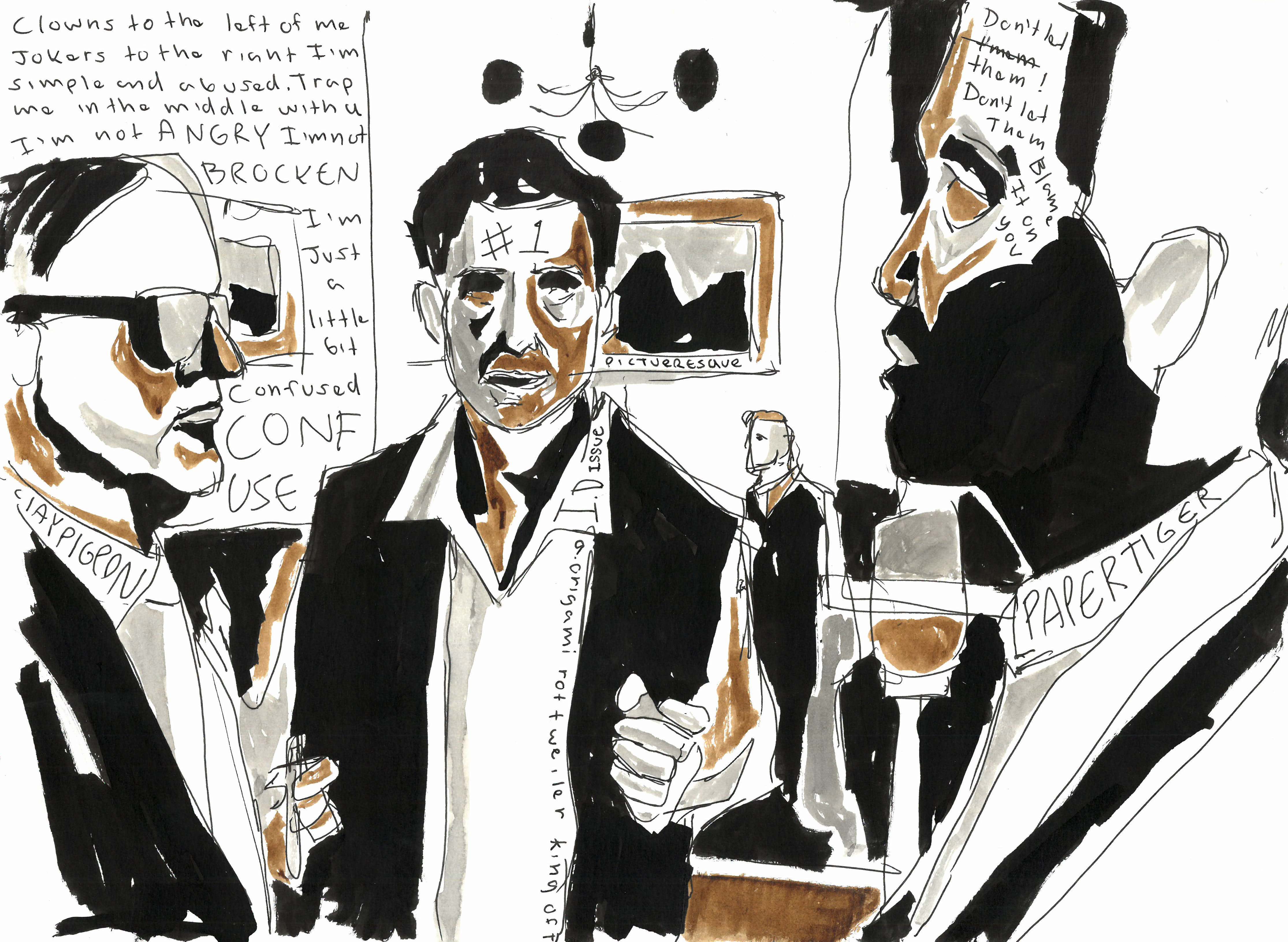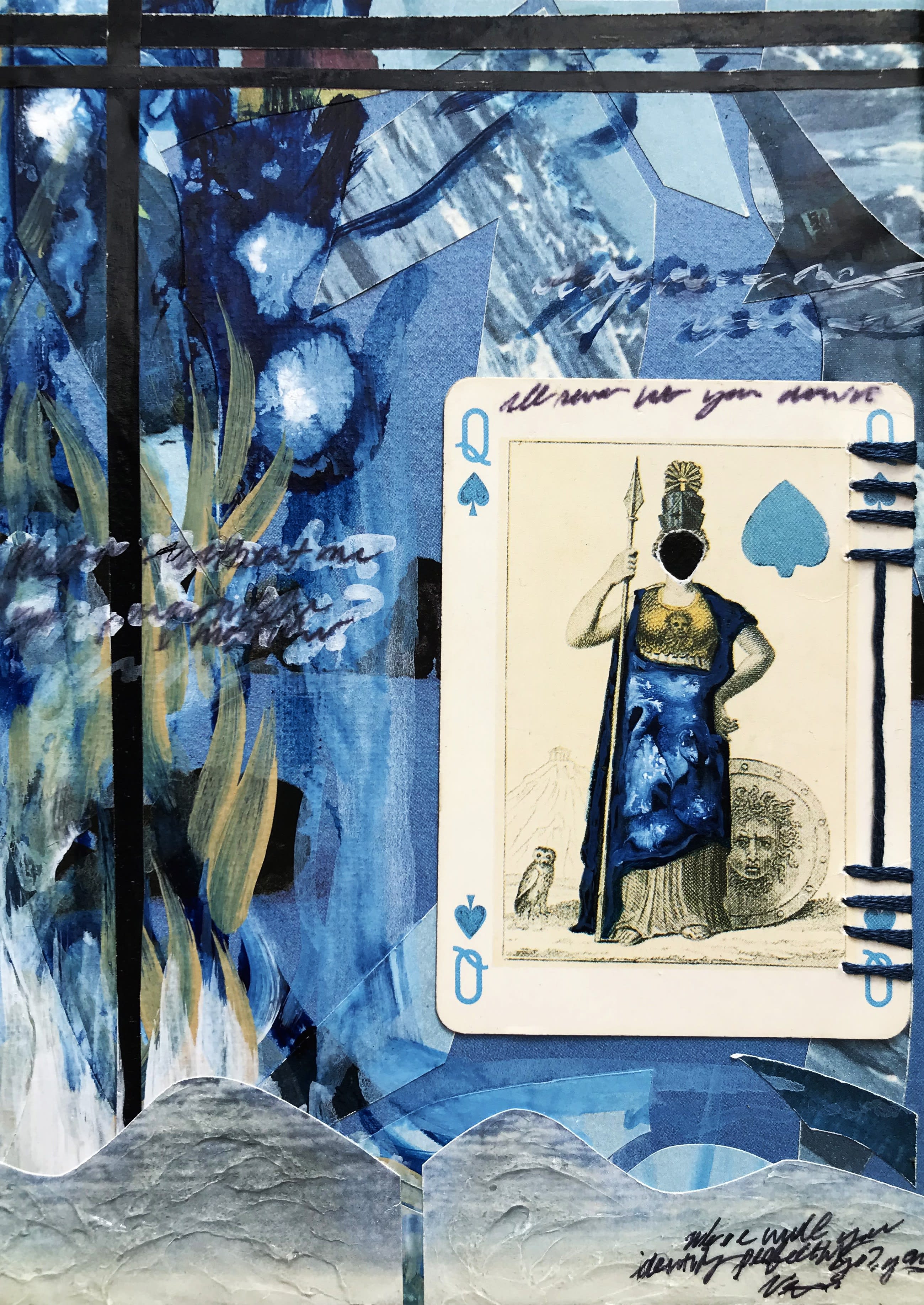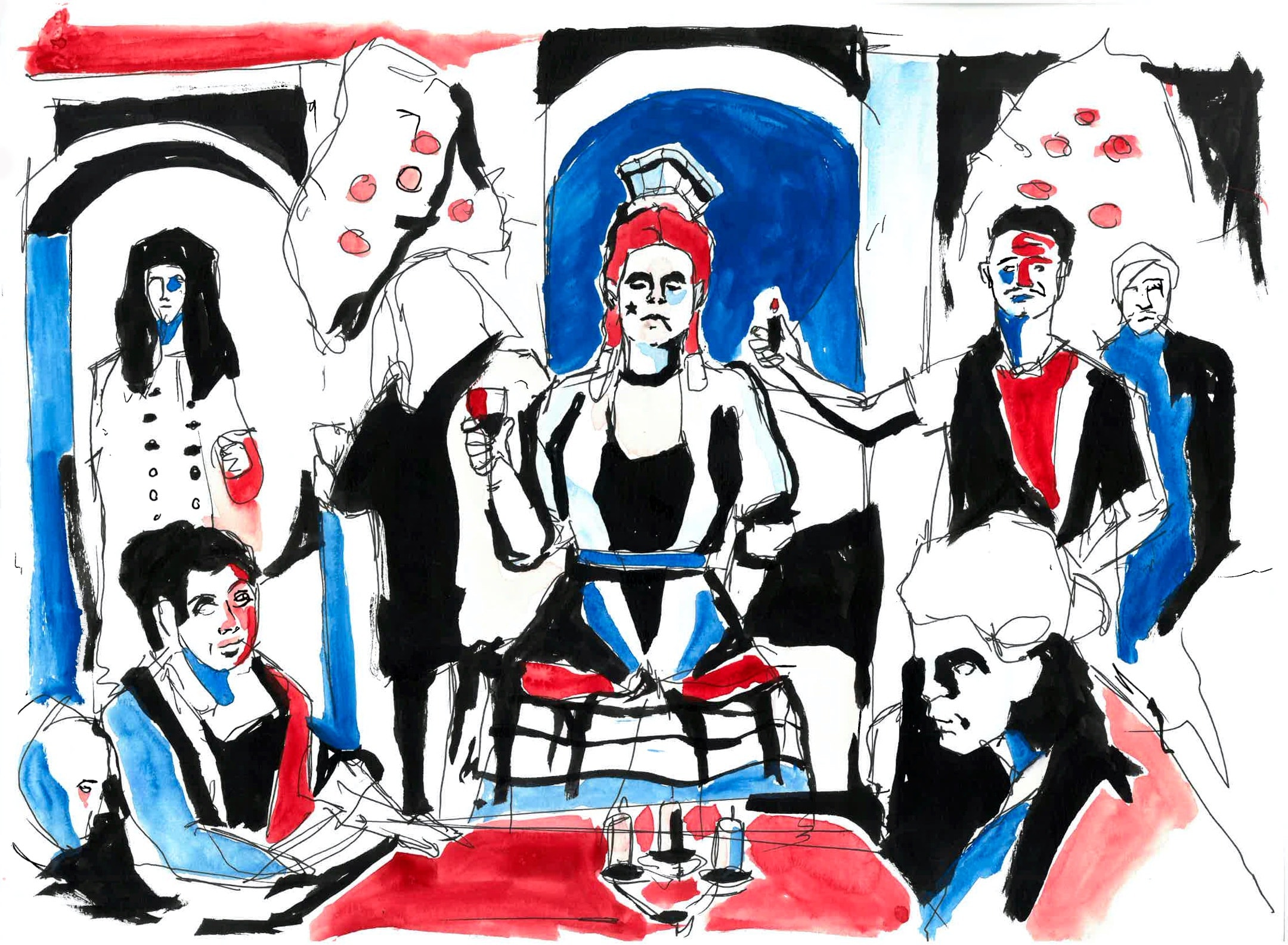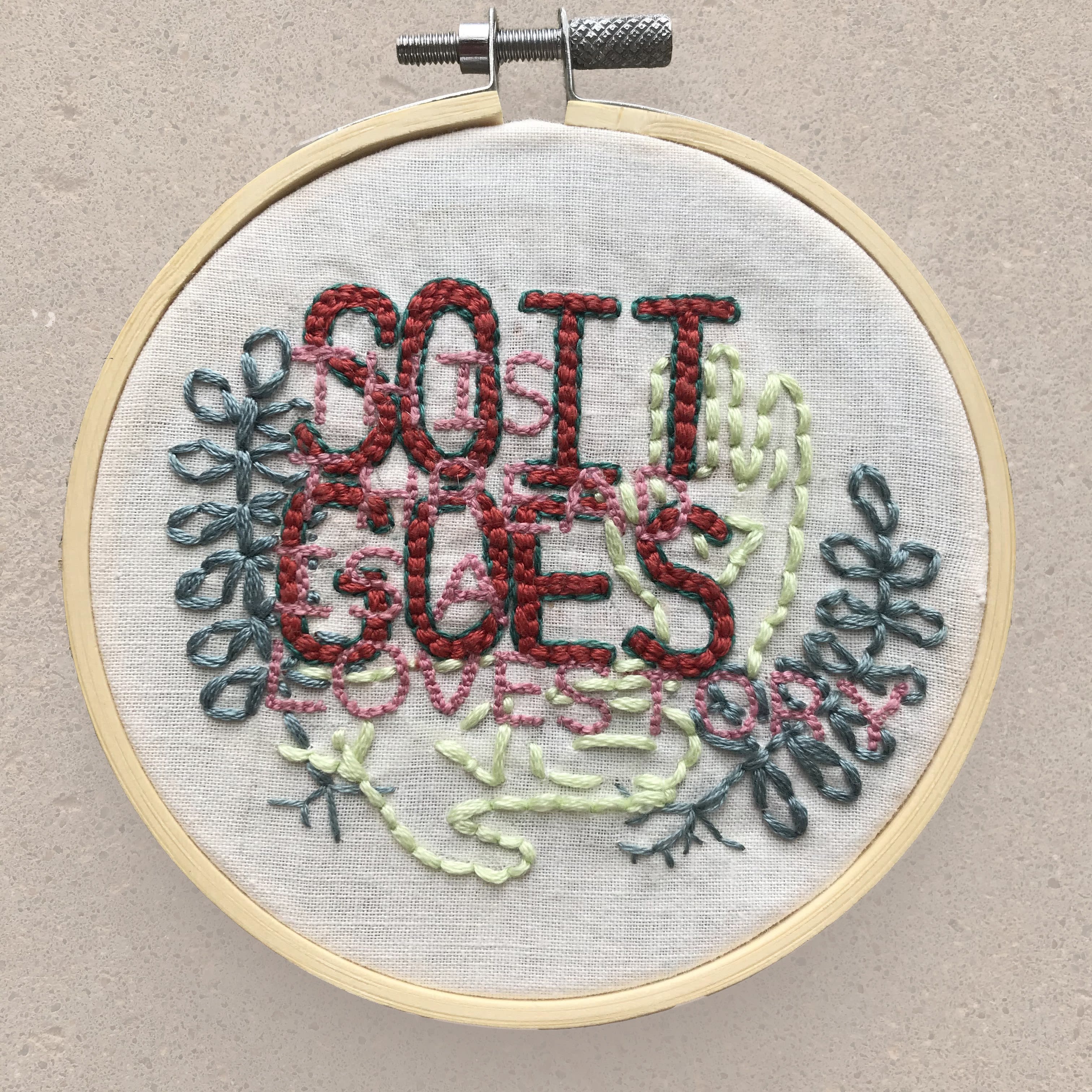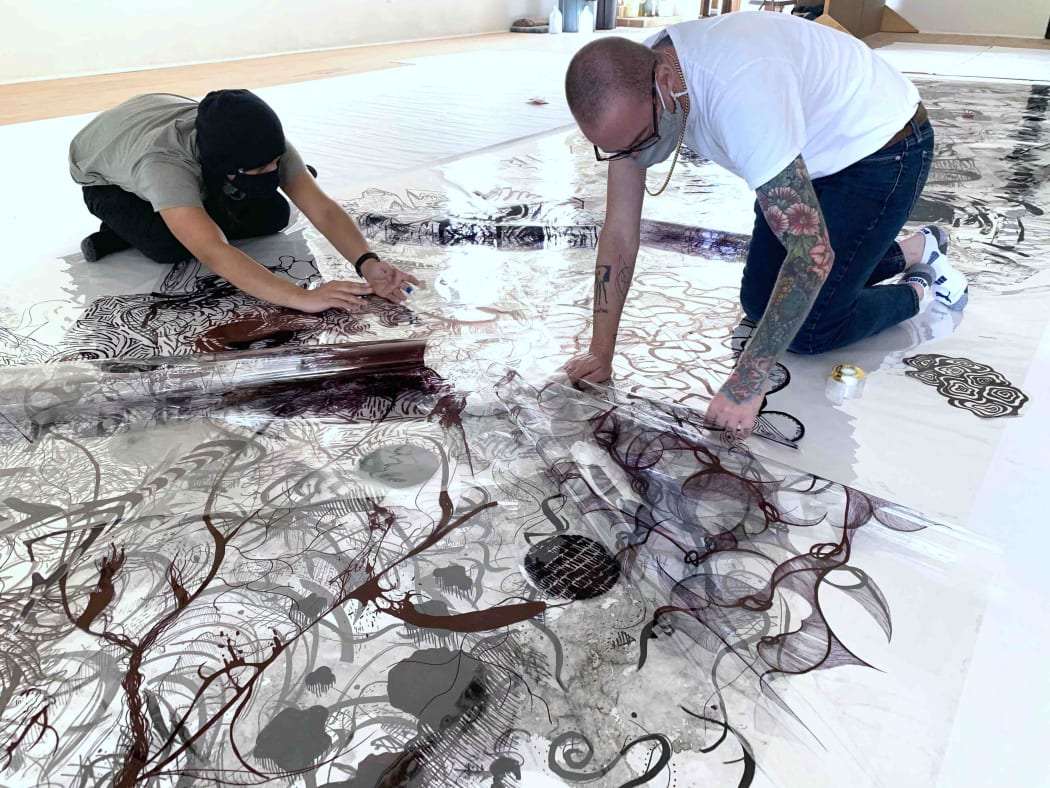
At their best, high school art classes are chromatic contact sports. Karina Hean, the Visual Art Department Chair at New Mexico School for the Arts, has witnessed the raw power of materials and ideas colliding through student creativity and critique. Entering the first full school year of the Covid-19 pandemic, Hean and her colleagues were determined to stir up that dynamism from afar.
Perhaps the most poetic manifestation of this goal is BioGraphic, a 25-by-8-foot wall drawing composed of 76 individual ink-on-mylar drawings by the NMSA Visual Art students and faculty. The mosaic is an icon of NMSA’s sweeping effort to grow together—even while everyone is stuck behind a screen.
Read on for an interview with Hean about the school’s multifaceted approach to the unprecedented challenges of Covid-19. Works by current and former NMSA students appear throughout the Q&A. Please consider acquiring a piece by one of these talented emerging artists, or donating directly to NMSA to help further their award-winning educational efforts. Read more of our Partners in Art features here.
Our new exhibition at our sister gallery form & concept, titled Family Room, features two NMSA alumni. They’ve both mentioned staying in touch with you and the NMSA community. How does this figure into your understanding of your role at NMSA?
One of my roles as Visual Arts chair is to maintain very strong relationships with alumni, and to help and support them in any way possible—even if it’s not in the arts. Now that I’ve got eight years at the school and five years as chair under my belt, I’m sustaining these really long relationships. If they need an extra crit or advice on grad school, I’ll be there.
I think it’s absolutely an evolution in making the role of chair what I would like it to be. The school is graduating and aging with each passing year. To be able to check in with them 4 to 5 years later—even one year later—is quite amazing to see what they’re doing. It’s a developing quality of the community that is NMSA. The students that have left are this continuing peer group and community.
It seems like recent graduates, who might’ve jumped straight into an in-person college community in more typical times, would need that support even more right now.
New high school graduates, especially in the first year, really need the continued support from people they already know. First semester blues, or feeling disconnected, is really common. So I make an extra effort to really reach out to the ones just starting their program, or in the summer in between, to make sure they know that the feeling of dislocation is normal.
And the cool thing is, if they’re in Portland or Taos or even in Santa Fe, we can do virtual visits and screen shares to talk about their work. I think they feel supported. They feel loved for sure, and they also know that there’s the integrity of professional advice that they can get from us. I’m your placement office helper, career advisor, extra critiquer.
Artemisio Romero y Carver,Wise Guys, 2019, Goauche, ink, 10.5 x 15 in (matted)
Is there some reciprocity there, in terms of boosting the current student body?
The future looks really bright for us to be able to host that kind of relationship more often. I’ve had alumni come and guest lecture and get the students inspired about projects that they’re working on.
Technology has always helped us, even before the pandemic. The alumni are looking to make an impact, even in the first year after graduating. To attend a Zoom meeting is way easier than if you’re trying to do something in the few weeks that you’re home for the holidays or something.
Veronica Silva, My Savior, 2020, Mixed media, 7 x 5 in
Speaking of Zoom, could you talk about how you’ve adapted your teaching philosophy to a virtual format?
I would say teaching philosophy, values, goals, principles, outcomes were actually sustained. It is a value translation, maybe even a transposition into a very different context.
There is an awareness that 20 people in a Zoom class can’t have a very productive Socratic seminar. If we can’t do that while we’re having class like we normally would, then it’s about being very creative as a teacher. I think all of our teachers at NMSA are slightly scared and slightly jazzed about all of this creative problem solving. How do we teach in this context?
Elena Bunker Ruiz, Untitled, 2020, Embroidered thread on recycled fabric, 5 x 5 in
What are some different ways you’ve answered that question?
We are constantly retooling as faculty. Our thinking could be characterized as creative problem solving: “We tried this, that didn’t work. Now, let’s try this. Should we do a critique in small groups? What would get the students to feel comfortable sharing?” Zoom makes them very nervous sometimes. We want them to be accountable to each other and engaged.
We’re also hosting virtual guest artists and going on virtual museum visits. We’re creating websites to put forth virtual exhibitions, so that the public can see and respond to what students are doing. For a recent juried exhibition, we used the digital format to show the juror’s rationale for the selections they made.
We have four exhibitions and collaborations coming up. We’re not letting any of those go, those benchmarks of collaboration. All of the excitement and the professional obligation are still there for the students.
Artemisio Romero y Carver, A Place at the Table, 2019, Goauche, ink, 10.5 x 15 in (matted)
On that note, is there anything that feels like it hasn’t changed so much in terms of learning dynamics?
Ultimately, what stays exactly the same is skill building, concept building, and the process of becoming aware as artists and as students. What is it that I as an artist want to be saying in the world? That honing of a young artist is still taking place, it’s just 100% across the Zoom screen. It means that teachers like me are on a whole lot of solo Zoom calls. It’s nonstop 15-to-20 minute check-ins with students. Those meetings are extremely valuable.
Veronica Silva, So It Goes, 2020, Embroidery, 4 x 4 in
And how are the students maintaining their studio practices without access to the NMSA facilities?
We're making supply kits for each student who’s taking two studio courses. It’s fun to put together a painting kit, a printmaking kit, a drawing kit. They can swing by, pick it up, and have a full kit for making work at home.
Of course, there’s having the materials and then there’s maintaining the motivation. Everybody feels a little less motivated creatively when they’re alone at this age. That surprised them. They thought they’d be fine making art on their own, but they’ve really had to lean on their peers to preserve that spark.
Artemisio Romero y Carver, Our Lady, 2020, Acrylic on bedsheet, 96 x 36 in
How have the faculty and students started to unpack some of the big ideas and themes that are emerging from this time of great change?
We started the year with conversations about what has been happening, what we’ve been wondering about. What do you want our community to be based on what’s happening nationally?
Something we do every year is an NMSA student values statement. This year was great, because they ended up in breakout rooms and mentor conversations. What do we know now that we didn’t know last year that is important for our community to uphold and say? They really had desires for inclusion, diversity, justice, for everyone to feel welcome.
Veronica Silva, Look Back, 2020, Mixed media, 2.75 x 2.75 in
It’s so heartening to think about community and inclusion in the face of all the isolation we’ve experienced in the past year!
That was another goal for the faculty: to give the students an opportunity to see themselves doing something that they couldn’t do alone. Something magical that could happen collaboratively.
I think BioGraphic is one of those big projects that fits right into the question of, what can we do alone but together? What can we be doing to concentrate our efforts? Solving that puzzle has involved a lot of creativity, but we are making it happen.
